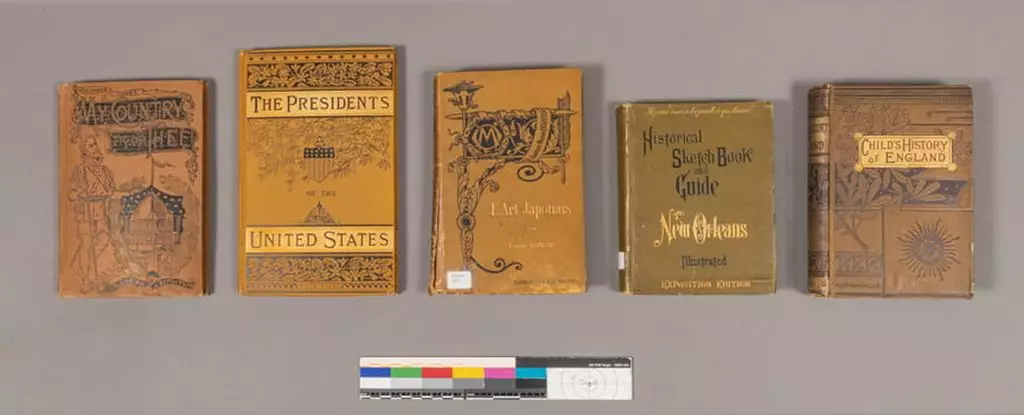Antique books, once adorned with vivid and colorful dyes, may pose a hidden danger to those who handle them. Recent analysis has uncovered the presence of toxic materials such as lead and chromium in Victorian-era books. While casual contact with these heavy metals may not cause immediate harm, frequent handling of antique books could result in dangerous exposure. This has raised concerns, especially for individuals like librarians and book dealers who come into regular contact with these vintage books.
During the 19th century, a new class of dyes emerged that revolutionized the way colors were produced. These dyes, which included substances like arsenic and aniline, were responsible for creating vibrant greens, magentas, blacks, and purples. While these dyes produced stunning colors, they also posed significant health risks. Factory workers and individuals who interacted closely with these dyes often succumbed to poisoning.
In a recent study, chemists at Lipscomb University uncovered alarming levels of lead and chromium in antique books from their collection. Using advanced testing methods such as X-ray fluorescence and inductively coupled plasma optical emission spectroscopy, the researchers were able to pinpoint the presence of these toxic metals. Some samples contained concentrations of lead and chromium that far exceeded safe limits set by health authorities.
Upon discovering the presence of these toxic dyes, the researchers at Lipscomb University took immediate action to protect public safety. The affected books were carefully sealed in plastic and removed from circulation to prevent further exposure. This proactive approach highlights the importance of identifying and addressing potential hazards in antique books and other vintage items.
As research on toxic dyes in antique books continues, there is a growing awareness of the need to safeguard against potential health risks. The team at Lipscomb University plans to delve deeper into the chemical composition of these dyes to better understand their effects. By sharing their findings at esteemed conferences like the Fall meeting of the American Chemical Society, they hope to raise awareness and promote safer handling practices for antique books.
The presence of toxic dyes in antique books serves as a stark reminder of the importance of conducting thorough investigations into historical artifacts. While these books may hold valuable insights into the past, they also have the potential to pose health risks to those who handle them. By staying vigilant and taking proactive measures to identify and address potential hazards, we can ensure the safety of both present and future generations.


Leave a Reply